Search Result
Results for "
neuropathy
" in MedChemExpress (MCE) Product Catalog:
1
Biochemical Assay Reagents
1
Isotope-Labeled Compounds
| Cat. No. |
Product Name |
Target |
Research Areas |
Chemical Structure |
-
- HY-116239
-
-
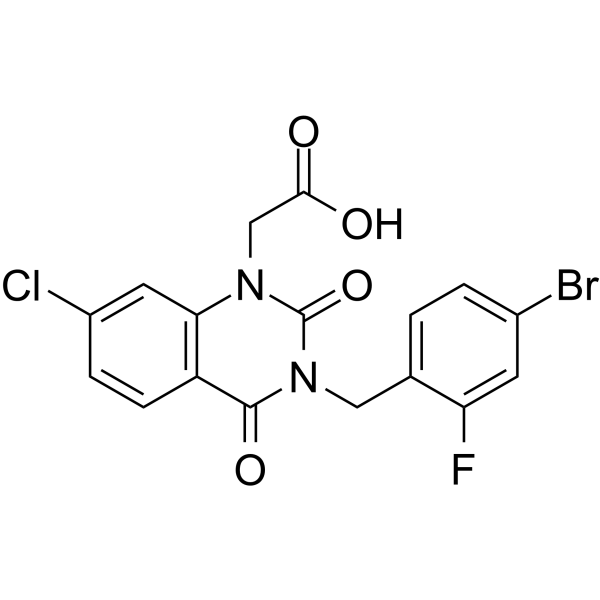
-
- HY-12883
-
|
|
Sodium Channel
|
Neurological Disease
|
|
PF 05089771 is a potent, orally active and selective arylsulfonamide Nav1.7 inhibitor, with IC50 values of 11 nM, 12 nM, 13 nM, 171 nM and 8 nM for hNav1.7, cynNav1.7, dogNav1.7, ratNav1.7, and musNav1.7, respectively. PF 05089771 is under the study for pain and diabetic neuropathy .
|
-

-
- HY-P1731B
-
|
LY3298176 hydrochloride
|
GLP Receptor
|
Neurological Disease
Metabolic Disease
Cancer
|
|
Tirzepatide hydrochloride (LY3298176 hydrochloride) is a glucose-dependent insulin nutritive polypeptide (GIP) and glucagon-like peptide-1 (GLP-1) receptor dual agonist. Tirzepatide hydrochloride has neuroprotective effects and can be used in the study of type 2 diabetes, diabetes-related neuropathy and obesity .
|
-
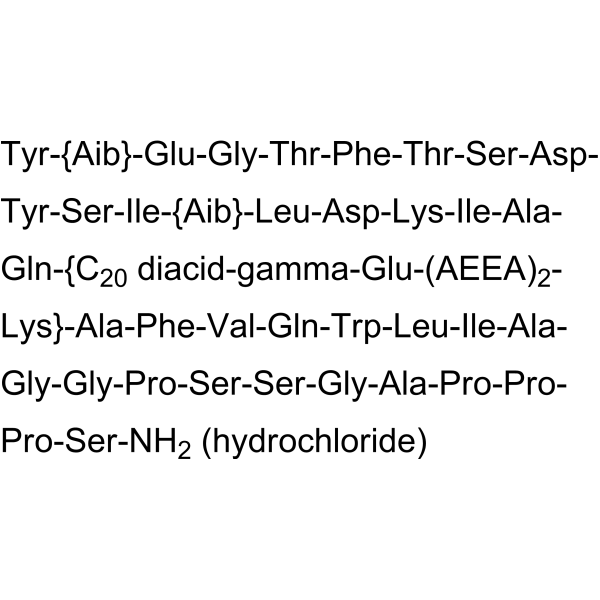
-
- HY-14897
-
-
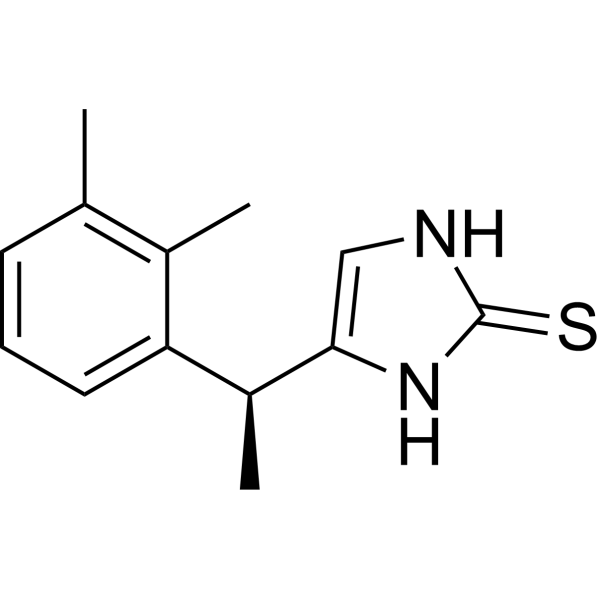
-
- HY-12883B
-
|
|
Sodium Channel
|
Neurological Disease
|
|
PF 05089771 tosylate is a potent, orally active and selective arylsulfonamide Nav1.7 inhibitor, with IC50 values of 11 nM, 12 nM, 13 nM, 171 nM and 8 nM for hNav1.7, cynNav1.7, dogNav1.7, ratNav1.7, and musNav1.7, respectively. PF 05089771 is under the study for pain and diabetic neuropathy .
|
-
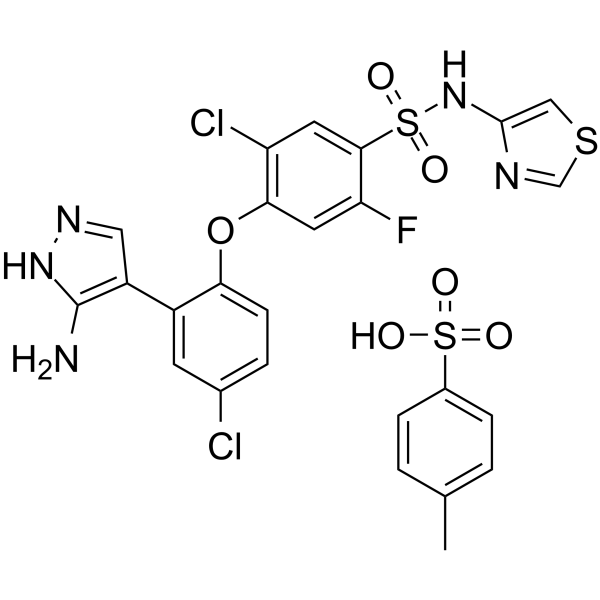
-
- HY-P1731
-
|
LY3298176
|
GLP Receptor
|
Neurological Disease
Metabolic Disease
Cancer
|
|
Tirzepatide (LY3298176) is a glucose-dependent insulin nutritive polypeptide (GIP) and glucagon-like peptide-1 (GLP-1) receptor dual agonist. Tirzepatide has neuroprotective effects and can be used in the study of type 2 diabetes, diabetes-related neuropathy and obesity .
|
-
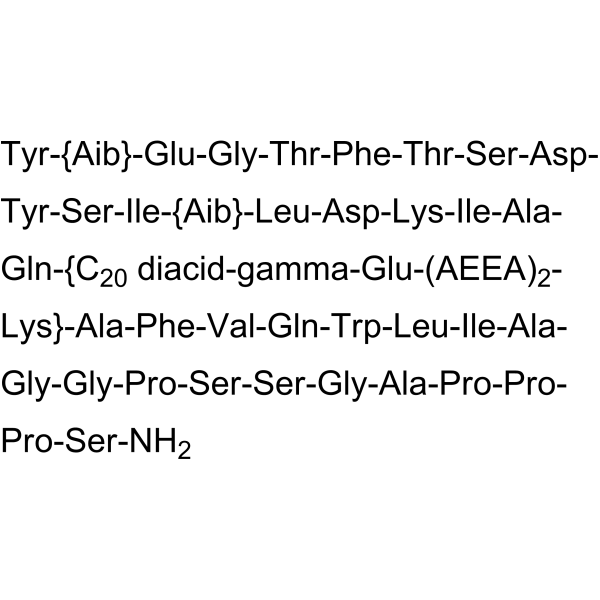
-
- HY-P1731A
-
|
LY3298176 TFA
|
GLP Receptor
|
Neurological Disease
Metabolic Disease
Cancer
|
|
Tirzepatide TFA (LY3298176 hydrochloride) is a glucose-dependent insulin nutritive polypeptide (GIP) and glucagon-like peptide-1 (GLP-1) receptor dual agonist. Tirzepatide TFA has neuroprotective effects and can be used in the study of type 2 diabetes, diabetes-related neuropathy and obesity .
|
-
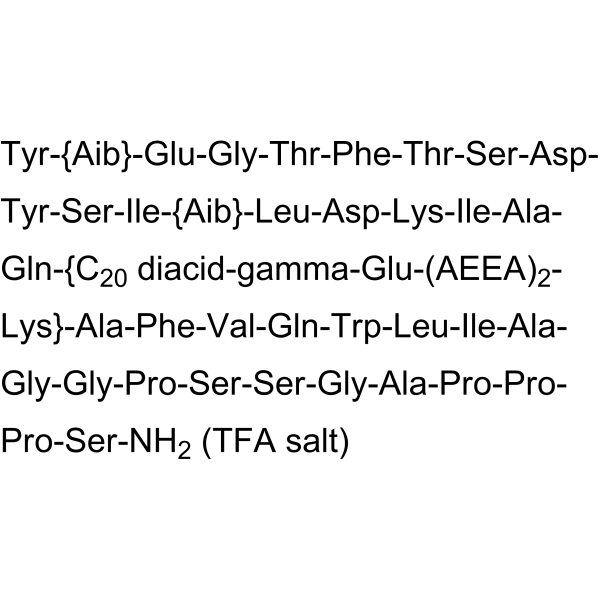
-
- HY-P9970
-
-

-
- HY-122963
-
|
|
Adenosine Receptor
|
Metabolic Disease
|
|
Danshenol B is a diterpenoid. Danshenol B has strong aldose reductase (AR) inhibitory activity with IC50 value of 0.042μM. Danshenol B can be used for the research of diabetic related complication resulted by metabolic abnormality, such as cataracts, retinopathy, neuropathy, and nephropathy .
|
-
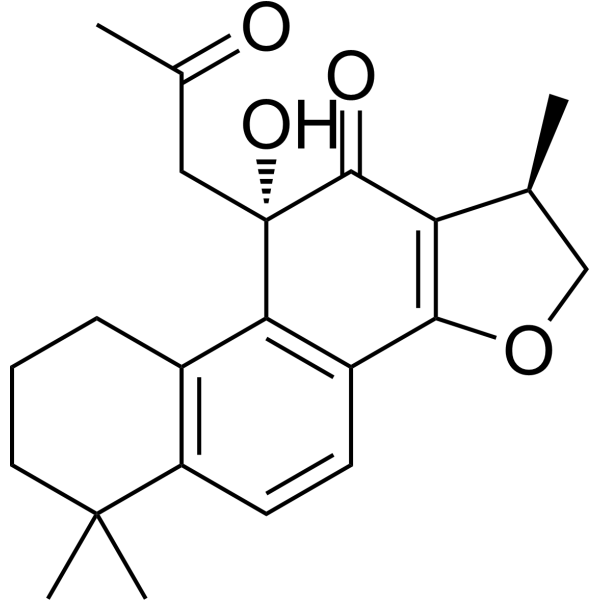
-
- HY-147750
-
|
|
Phosphodiesterase (PDE)
|
Neurological Disease
Cancer
|
|
TDP1 Inhibitor-2 (compound 5) is a potent inhibitor for TDP1 (tyrosyl-DNA phosphodiesterase 1), with an IC50 of 99 nM. TDP1 Inhibitor-2 also can inhibit SCAN1 (spinocerebellar ataxia syndrome with axonal neuropathy), with an IC50 of 3.5 μM .
|
-

-
- HY-66009
-
-

-
- HY-W127737
-
|
Mecobalamin hydrate
|
Biochemical Assay Reagents
|
Others
|
|
Methylcobalamin Hydrate is a coenzyme required for methionine biosynthesis. Vitamins (hematopoiesis). It acts as a histamine receptor, Alzheimer study. Methylcobalamin is also used in the research of peripheral neuropathy, diabetic neuropathy, and as an initial research for amyotrophic lateral sclerosis. It can be used to prevent or research pathologies caused by vitamin B12 deficiency, such as pernicious anemia.
|
-
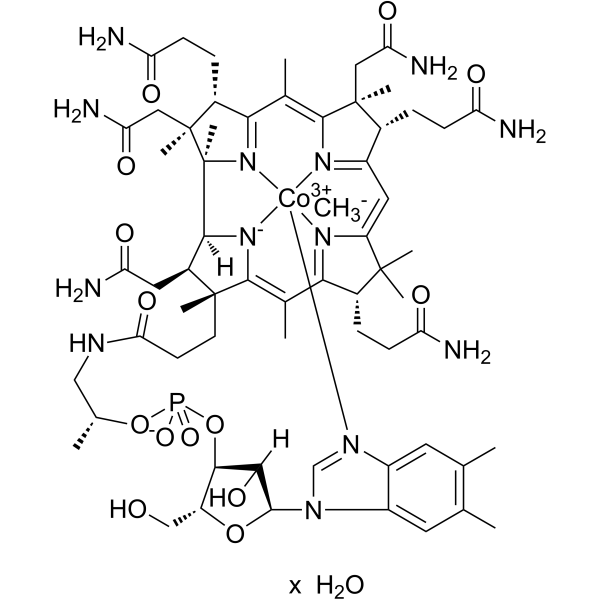
-
- HY-B1202
-
|
AY-22284
|
Aldose Reductase
|
Endocrinology
|
|
Alrestatin is an inhibitor of aldose reductase, an enzyme involved in the pathogenesis of complications of diabetes mellitus, including diabetic neuropathy.
|
-
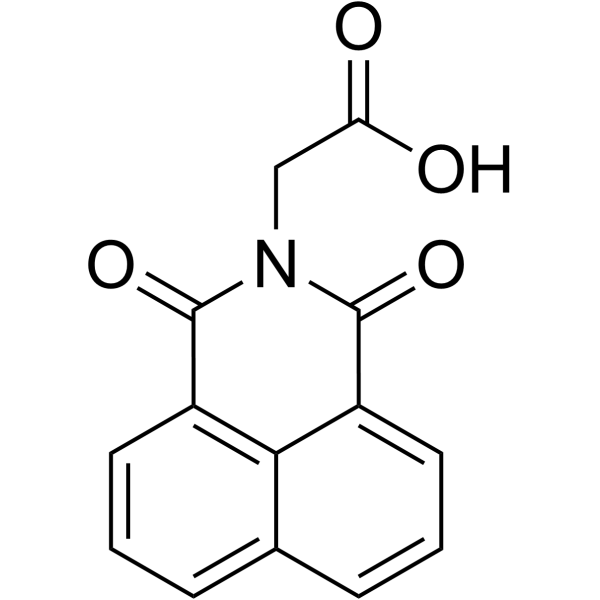
-
- HY-B1202A
-
|
AY-22284A
|
Aldose Reductase
|
Endocrinology
|
|
Alrestatin sodium is an inhibitor of aldose reductase, an enzyme involved in the pathogenesis of complications of diabetes mellitus, including diabetic neuropathy.
|
-
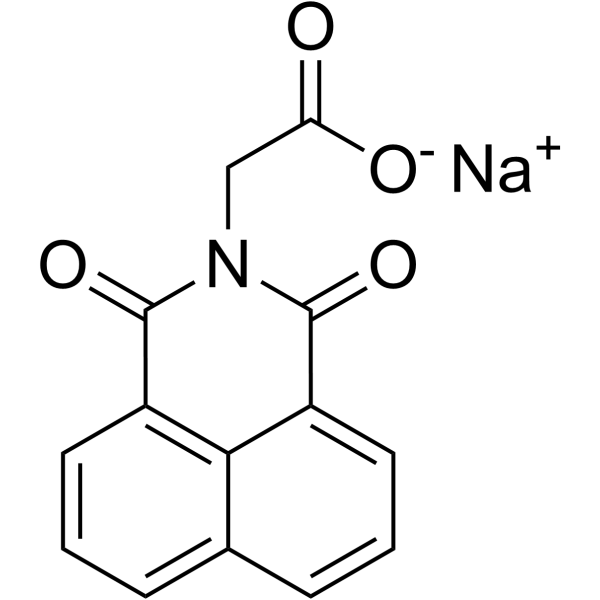
-
- HY-B0985
-
|
|
TRP Channel
|
Neurological Disease
|
|
Phenazopyridine hydrochlorideis a competitive SARM1 inhibitor, with IC50 145 μM. Phenazopyridine hydrochlorideis a TRPM8 antagonist. Phenazopyridine hydrochloride has a local anesthetic/analgesic effect. Phenazopyridine hydrochlorideis used to relieve painful symptoms of conditions such as cystitis and urethritis. Phenazopyridine hydrochloridecan promote neuronal differentiation and can also be used in the study of traumatic brain injury, peripheral neuropathy and neurodegenerative diseases .
|
-
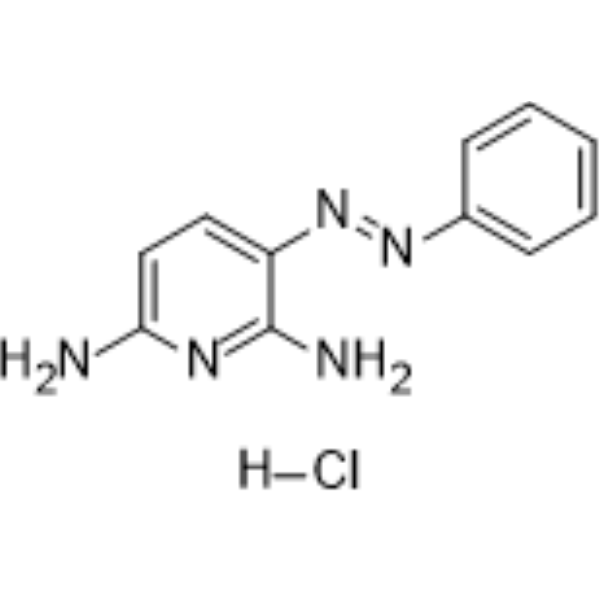
-
- HY-155089
-
|
|
MAP3K
|
Neurological Disease
|
|
IACS-52825 is a potent and selective DLK inhibitor with Kd of 1.3 nM, useful for the study of chemotherapy-induced peripheral neuropathy .
|
-
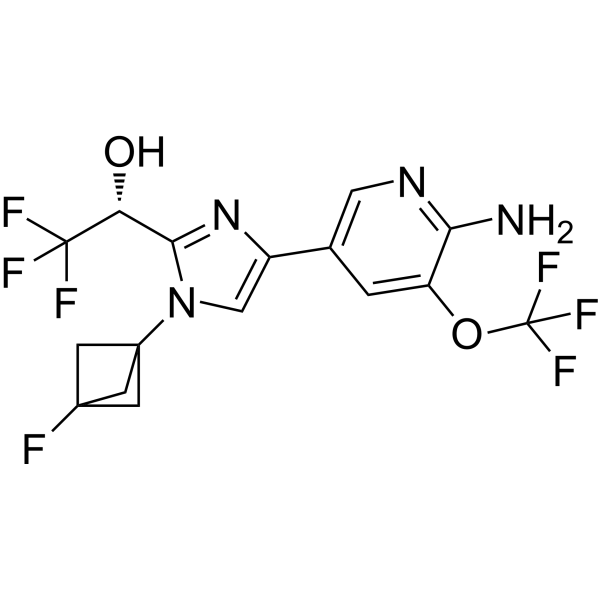
-
- HY-109156
-
|
|
GABA Receptor
|
Metabolic Disease
|
|
Pregabalin arenacarbil is a proagent of Pregabalin.Pregabalin is an analog of gamma-aminobutyric acid (GABA) for the research of post herpetic neuralgia, peripheral diabetic neuropathy,fibromyalgia and epilepsy .
|
-
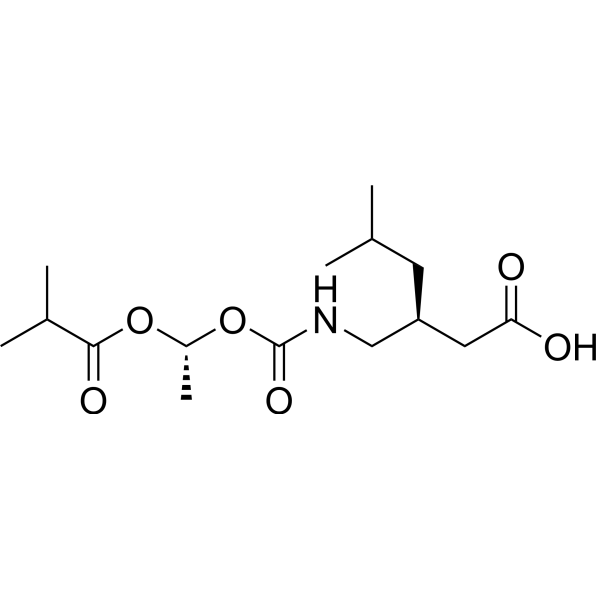
-
- HY-106856
-
|
NT-11624
|
Others
|
Cancer
|
|
Dimiracetam is an orally active compound, with anti-neuropathic activity. Dimiracetam inhibits hypersensitivity and neurological alterations, and inhibits Sorafenib (HY-10201)-induced neuropathy in cold stimulation rat models .
|
-
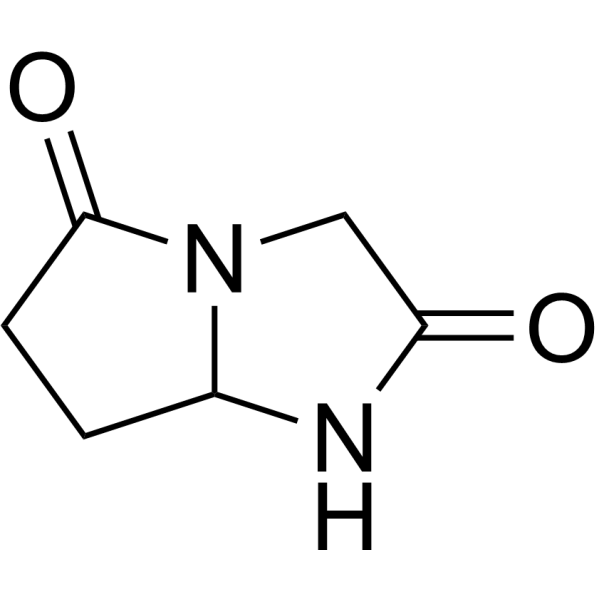
-
- HY-124401
-
BT-13
2 Publications Verification
|
RET
|
Neurological Disease
|
|
BT-13 is a potent and selective glial cell line-derived neurotrophic factor (GDNF) receptor RET agonist independently of GFLs, promoting neurite growth from sensory neurons in vitro and attenuates experimental neuropathy in the Rat .
|
-
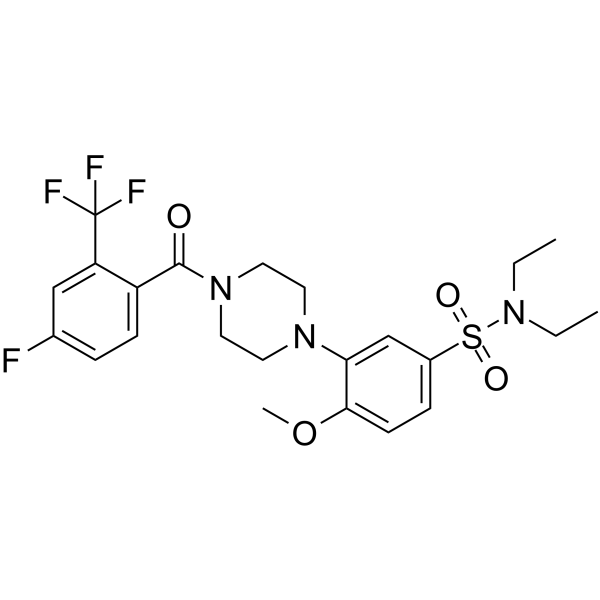
-
- HY-111791
-
|
|
HDAC
|
Cancer
|
|
ACY-1083 is a selective and brain-penetrating HDAC6 inhibitor with an IC50 of 3 nM and is 260-fold more selective for HDAC6 than all other classes of HDAC isoforms. ACY-1083 effectively reverses chemotherapy-induced peripheral neuropathy .
|
-
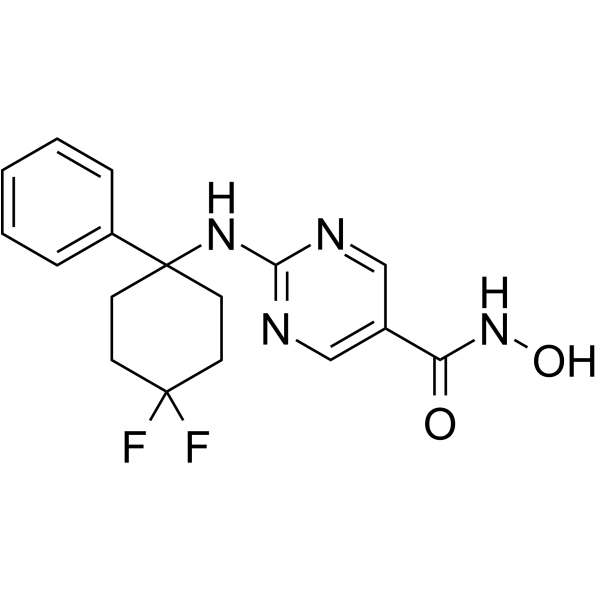
-
- HY-14550
-
-
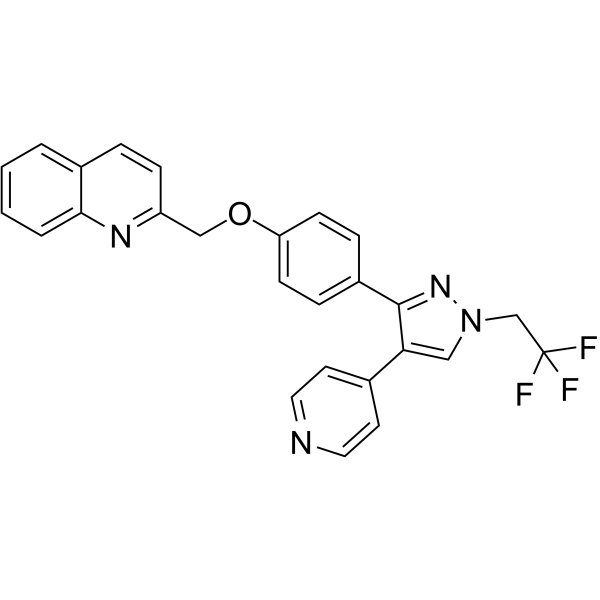
-
- HY-145559
-
|
KU-596
|
HSP
|
Metabolic Disease
|
|
Cemdomespib (KU-596) is a highly bioavailable second-generation Hsp90 modulator. Cemdomespib has shown efficacy in improving sensory deficits in models of diabetic peripheral neuropathy. Cemdomespib induces Hsp70 levels and manifest neuroprotective activity through induction of the heat shock response .
|
-
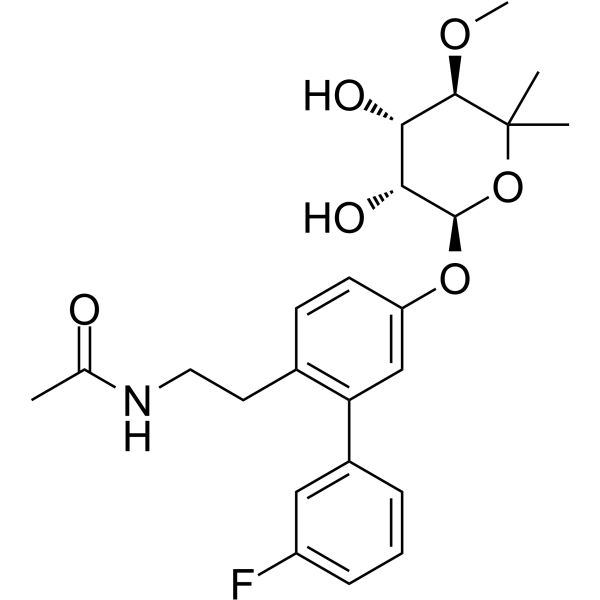
-
- HY-N0478
-
Neoline
1 Publications Verification
Bullatine B
|
Others
|
Neurological Disease
|
|
Neoline (Bullatine B)) is the active ingredient of the active ingredient (PA), which can be used to cure the disease. Neoline Flow Suppression Nav1.7 Electrical Flow Control (VGSC),Improve diabetes mechanical pain sensitivity. Neoline has a list of compounds that can be used, research on its use, and the quality of its processing during processing in pain.
|
-

-
- HY-105253
-
|
|
PARP
|
Neurological Disease
|
|
PARP-2/1-IN-2 (Compound 4a), the enantiomer of Veliparib (HY-10129), is a potent PARP inhibitor with Kis of 2 and 5 nM against PARP-2 and PARP-1, respectively. PARP-2/1-IN-2 has an EC50 of 3 nM in a cell based assay of PARP activity .
|
-

-
- HY-B0415
-
|
|
Glucocorticoid Receptor
Wnt
|
Inflammation/Immunology
Endocrinology
|
|
Fluocinolone is a glucocorticoid glucocorticoid receptor agonist. Fluocinolone is effective in preventing both lipid accumulation and inflammation. Fluocinolone can promote the proliferation of DPCs and has the potential role in repairing injured pulp tissues. Fluocinolone can be used to study the prevention of chemotherapy-induced peripheral neuropathy caused by Paclitaxel (HY-B0015) .
|
-

-
- HY-124754
-
|
BTRX-335140; CYM-53093
|
Opioid Receptor
|
Neurological Disease
Metabolic Disease
|
|
Navacaprant (BTRX-335140) is a selective and orally active κ opioid receptor (KOR) antagonist, has antagonist activity for κOR, μOR and δOR with IC50 values of 0.8 nM, 110 nM, and 6500 nM, respectively.
Navacaprant endows with favorable in vitro ADMET and in vivo pharmacokinetic profiles and medication-like duration of action in rats. Navacaprant distributes well into the CNS and can be used for the research of neuropathy .
|
-
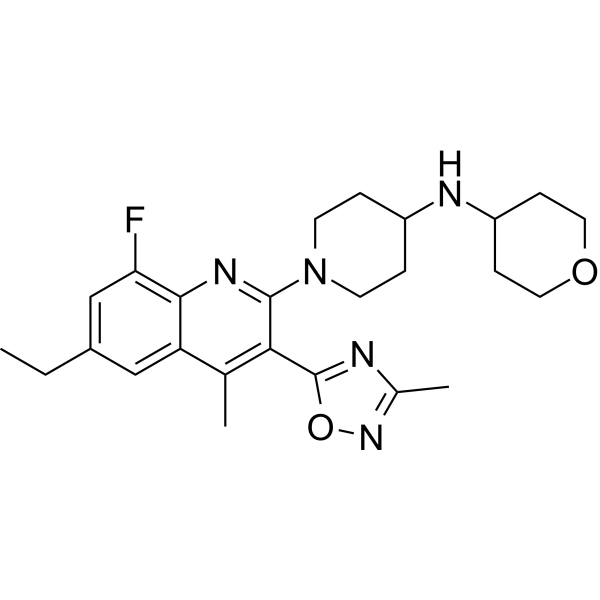
-
- HY-B0985A
-
|
|
|
|
|
Phenazopyridine is a competitive SARM1 inhibitor, with IC50 145 μM. Phenazopyridine is a TRPM8 antagonist. Phenazopyridine has a local anesthetic/analgesic effect. Phenazopyridine is used to relieve painful symptoms of conditions such as cystitis and urethritis. Phenazopyridine can promote neuronal differentiation and can also be used in the study of traumatic brain injury, peripheral neuropathy and neurodegenerative diseases .
|
-

-
- HY-P5865
-
|
Theraphotoxin-Tap1a; TRTX-Tap1a; µ/ω-TRTX-Tap1a
|
Sodium Channel
|
Neurological Disease
|
|
Tap1a (Theraphotoxin-Tap1a) is a spider venom peptide that inhibits sodium channels with IC50s of 80 nM and 301 nM against Nav1.7 and Nav1.1, respectively. Tap1a shows analgesic effects .
|
-

-
- HY-N9335
-
-

-
- HY-148948
-
|
|
NAMPT
|
Neurological Disease
|
|
NAMPT activator-3, a NAT derivative, is a NAMPT activator with an EC50 of 2.6 μM and a KD of 132 nM. NAMPT activator-3 effectively protects cultured cells from FK866 (HY-50876)-mediated toxicity. NAMPT activator-3 exhibits strong neuroprotective efficacy in a chemotherapy-induced peripheral neuropathy (CIPN) mouse model without any overt toxicity .
|
-

-
- HY-156103
-
|
|
Huntingtin
|
Neurological Disease
|
|
mHTT-IN-2 (compound 27) is a potent inhibitor (EC50=0.066 μM) of mutant huntingtin (mHTT). mHTT-IN-2 reduces canonical splicing of HTT RNA exons [49-50] and is a splicing regulator of the huntingtin (HTT) gene. mHTT-IN-2 exhibits inhibitory activity in vitro and in vivo in human HD stem cells and mouse BACHD models. mHTT-IN-2 may be used in the study of branaplam-related peripheral neuropathy .
|
-
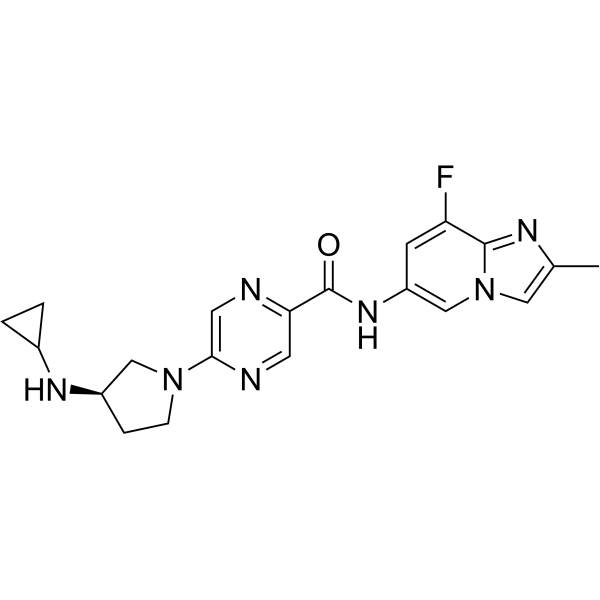
-
- HY-A0081
-
|
|
Dopamine Receptor
SARS-CoV
Sodium Channel
|
Neurological Disease
Cancer
|
|
Fluphenazine dihydrochloride is a potent, orally active phenothiazine-based dopamine receptor antagonist. Fluphenazine dihydrochloride blocks neuronal voltage-gated sodium channels. Fluphenazine dihydrochloride acts primarily through antagonism of postsynaptic dopamine-2 receptors in mesolimbic, nigrostriatal, and tuberoinfundibular neural pathways. Fluphenazine dihydrochloride can antagonize Methylphenidate-induced stereotyped gnawing and inhibit climbing behaviour in mice. Fluphenazine dihydrochloride can be used for researching psychosis and painful peripheral neuropathy associated with diabetes and has potential to inhibit SARS-CoV-2 .
|
-
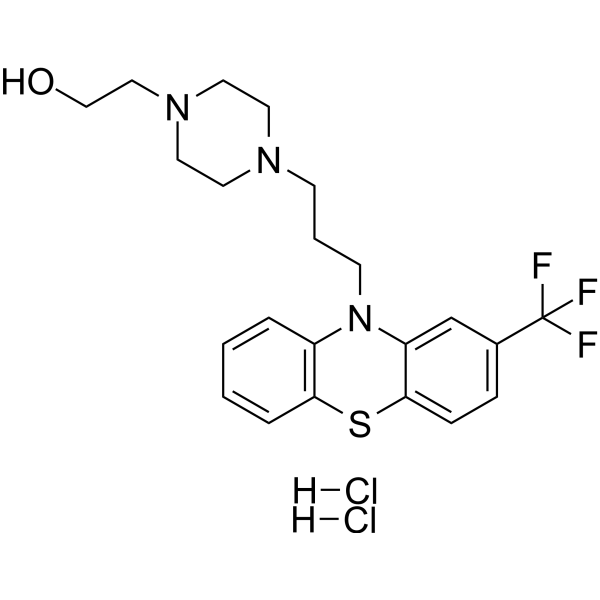
-
- HY-119980
-
|
|
Sodium Channel
Dopamine Receptor
SARS-CoV
|
Infection
Neurological Disease
|
|
Fluphenazine is a potent, orally active phenothiazine-based dopamine receptor antagonist. Fluphenazine blocks neuronal voltage-gated sodium channels. Fluphenazine acts primarily through antagonism of postsynaptic dopamine-2 receptors in mesolimbic, nigrostriatal, and tuberoinfundibular neural pathways. Fluphenazine can antagonize Methylphenidate-induced stereotyped gnawing and inhibit climbing behaviour in mice. Fluphenazine can be used for researching psychosis and painful peripheral neuropathy associated with diabetes and has potential to inhibit SARS-CoV-2 .
|
-

-
- HY-119980B
-
|
|
Dopamine Receptor
Sodium Channel
SARS-CoV
|
Neurological Disease
|
|
Fluphenazine hydrochloride is a potent, orally active phenothiazine-based dopamine receptor antagonist. Fluphenazine hydrochloride blocks neuronal voltage-gated sodium channels. Fluphenazine hydrochloride acts primarily through antagonism of postsynaptic dopamine-2 receptors in mesolimbic, nigrostriatal, and tuberoinfundibular neural pathways. Fluphenazine hydrochloride can antagonize Methylphenidate-induced stereotyped gnawing and inhibit climbing behaviour in mice. Fluphenazine hydrochloride can be used for researching psychosis and painful peripheral neuropathy associated with diabetes and has potential to inhibit SARS-CoV-2 .
|
-
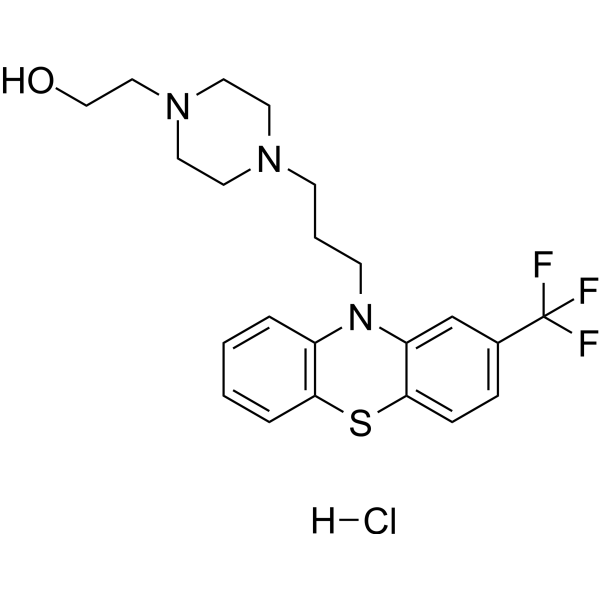
-
- HY-119980A
-
|
|
Dopamine Receptor
Sodium Channel
SARS-CoV
|
Infection
Neurological Disease
|
|
Fluphenazine dimaleate is a potent, orally active phenothiazine-based dopamine receptor antagonist. Fluphenazine dimaleate blocks neuronal voltage-gated sodium channels. Fluphenazine dimaleate acts primarily through antagonism of postsynaptic dopamine-2 receptors in mesolimbic, nigrostriatal, and tuberoinfundibular neural pathways. Fluphenazine dimaleate can antagonize Methylphenidate-induced stereotyped gnawing and inhibit climbing behaviour in mice. Fluphenazine dimaleate can be used for researching psychosis and painful peripheral neuropathy associated with diabetes and has potential to inhibit SARS-CoV-2 .
|
-
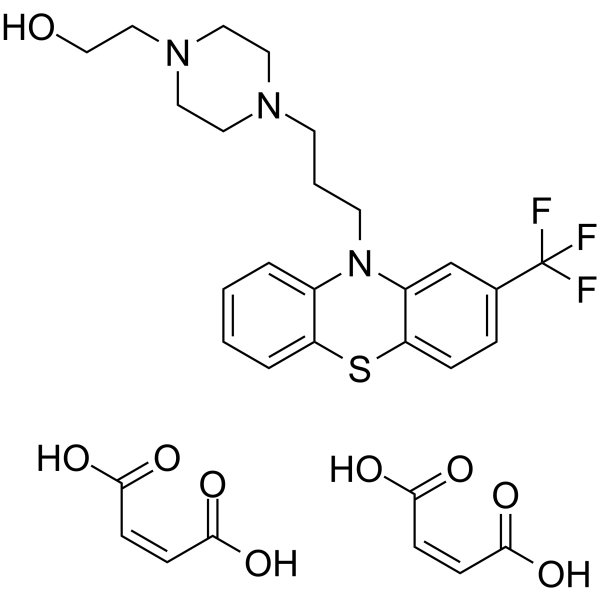
-
- HY-119980S
-
|
|
Isotope-Labeled Compounds
Sodium Channel
Dopamine Receptor
SARS-CoV
|
Others
|
|
Fluphenazine-d8 is the deuterium labeled Fluphenazine. Fluphenazine is a potent, orally active phenothiazine-based dopamine receptor antagonist. Fluphenazine blocks neuronal voltage-gated sodium channels. Fluphenazine acts primarily through antagonism of postsynaptic dopamine-2 receptors in mesolimbic, nigrostriatal, and tuberoinfundibular neural pathways. Fluphenazine can antagonize Methylphenidate-induced stereotyped gnawing and inhibit climbing behaviour in mice. Fluphenazine can be used for researching psychosis and painful peripheral neuropathy associated with diabetes and has potential to inhibit SARS-CoV-2 .
|
-
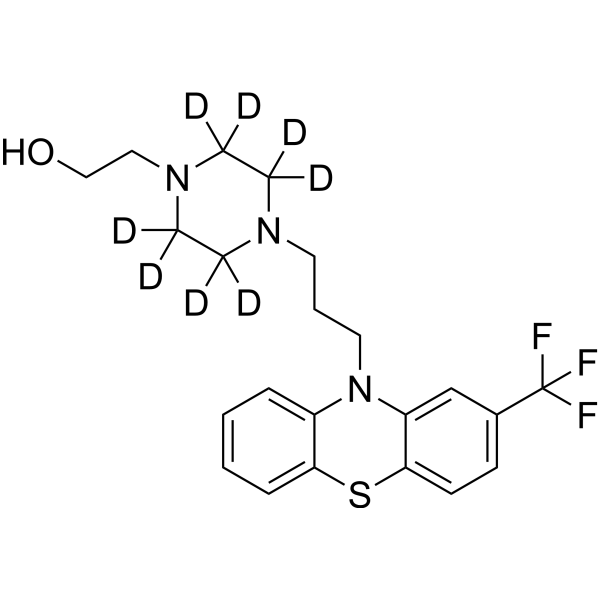
-
- HY-122671
-
|
|
Others
|
Neurological Disease
|
|
OB-1 is a stomatin-like protein-3 (STOML3) oligomerization blocker. OB-1 is an effective inhibitor of the self-association of Stomatin, STOML1 and STOML2, but not podocin .
|
-

-
- HY-A0081R
-
|
|
Dopamine Receptor
SARS-CoV
Sodium Channel
|
Neurological Disease
Cancer
|
|
Fluphenazine (dihydrochloride) (Standard) is the analytical standard of Fluphenazine (dihydrochloride). This product is intended for research and analytical applications. Fluphenazine dihydrochloride is a potent, orally active phenothiazine-based dopamine receptor antagonist. Fluphenazine dihydrochloride blocks neuronal voltage-gated sodium channels. Fluphenazine dihydrochloride acts primarily through antagonism of postsynaptic dopamine-2 receptors in mesolimbic, nigrostriatal, and tuberoinfundibular neural pathways. Fluphenazine dihydrochloride can antagonize Methylphenidate-induced stereotyped gnawing and inhibit climbing behaviour in mice. Fluphenazine dihydrochloride can be used for researching psychosis and painful peripheral neuropathy associated with diabetes and has potential to inhibit SARS-CoV-2 .
|
-

-
- HY-129380
-
|
Fructoselysine
|
Endogenous Metabolite
|
Metabolic Disease
|
|
Fructosyl-lysine (Fructoselysine) is an amadori glycation product from the reaction of glucose and lysine by the Maillard reaction. Fructosyl-lysine is the precursor to glucosepane, a lysine–arginine protein cross-link that can be an indicator in diabetes detection .
|
-
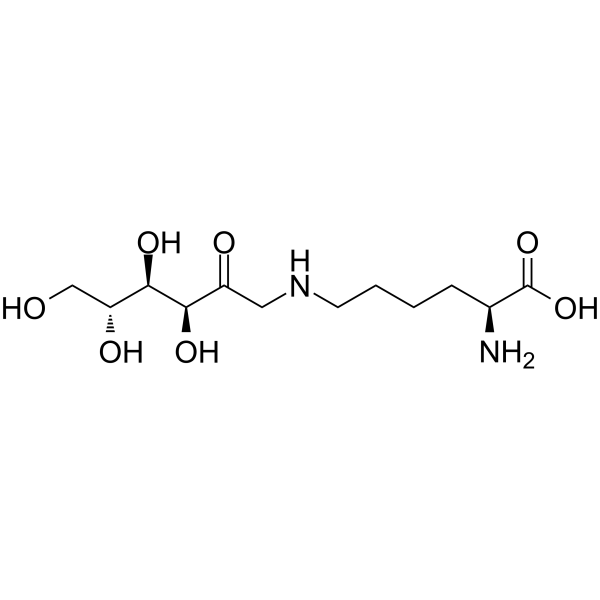
-
- HY-129380A
-
|
Fructoselysine dihydrochloride
|
Endogenous Metabolite
|
Metabolic Disease
|
|
Fructosyl-lysine (Fructoselysine) dihydrochloride is an amadori glycation product from the reaction of glucose and lysine by the Maillard reaction. Fructosyl-lysine dihydrochloride is the precursor to glucosepane, a lysine–arginine protein cross-link that can be an indicator in diabetes detection .
|
-
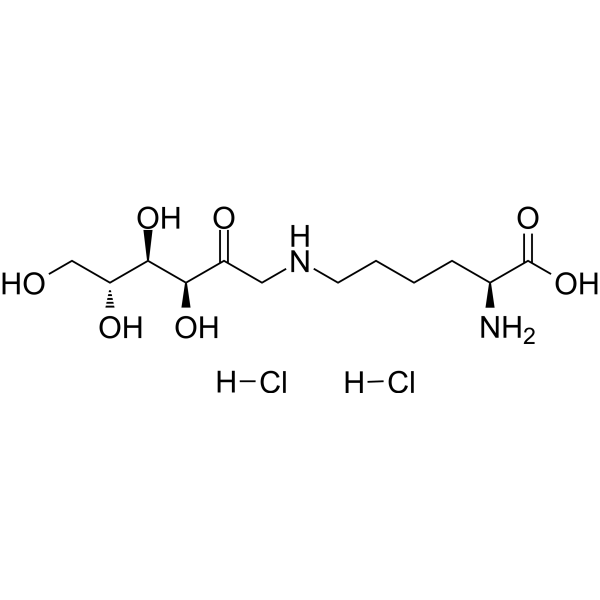
-
- HY-13630
-
|
BMY-40481
|
Topoisomerase
Bacterial
Autophagy
Apoptosis
|
Infection
Neurological Disease
Cancer
|
|
Etoposide phosphate (BMY-40481) is a potent anti-cancer chemotherapy agent and a selective topoisomerase II inhibitor to prevent re-ligation of DNA strands. Etoposide phosphate is the phosphate ester proagent of etoposide and is considered as active equivalent to Etoposide. Etoposide phosphate induces cell cycle arrest, apoptosis, and autophagy.
|
-
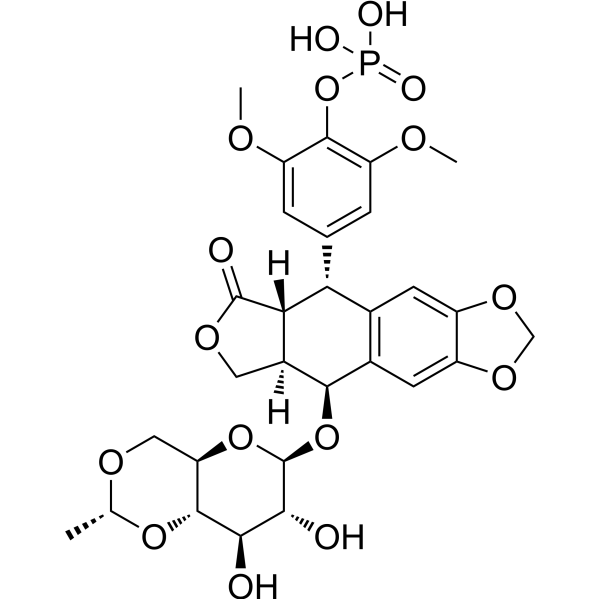
-
- HY-13630A
-
|
BMY-40481 disodium
|
Topoisomerase
Autophagy
Apoptosis
|
Neurological Disease
Cancer
|
|
Etoposide phosphate disodium (BMY-40481 disodium) is a potent anti-cancer chemotherapy agent and a selective topoisomerase II inhibitor to prevent re-ligation of DNA strands. Etoposide phosphate disodium is the phosphate ester proagent of etoposide and is considered as active equivalent to Etoposide. Etoposide phosphate disodium induces cell cycle arrest, apoptosis, and autophagy.
|
-

-
- HY-18099
-
S1RA
1 Publications Verification
E-52862
|
Sigma Receptor
5-HT Receptor
|
Neurological Disease
|
|
S1RA (E-52862) is a highly selective σ1 receptor (σ1R) antagonist with Kis of 17 nM and 23.5 nM for human σ1R and guinea pig σ1R, respectively. S1RA has Moderate antagonistic activity for human 5-HT2B receptor (Ki= 328 nM). S1RA has antinociceptive effects in neuropathic pain models. S1RA prevents mechanical and cold hypersensitivity in Oxaliplatin (HY-17371)-treated mice .
|
-
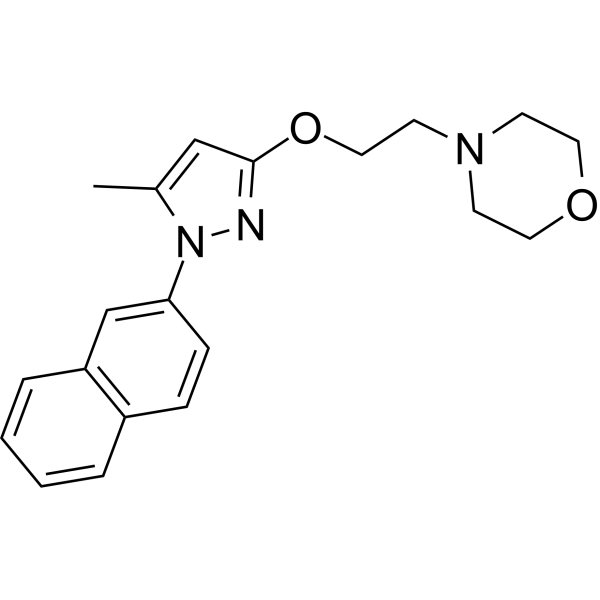
-
- HY-136535
-
|
hTrkA-IN-1
|
Trk Receptor
|
Inflammation/Immunology
|
|
Anizatrectinib (hTrkA-IN-1) is a potent and orally active inhibitor of TrkA kinase with an IC50 of 1.3 nM, compound 2 extracted from patent WO2015175788. Anizatrectinib can be used for the study of inflammatory disease, such as prostatitis, pelvic, et al .
|
-
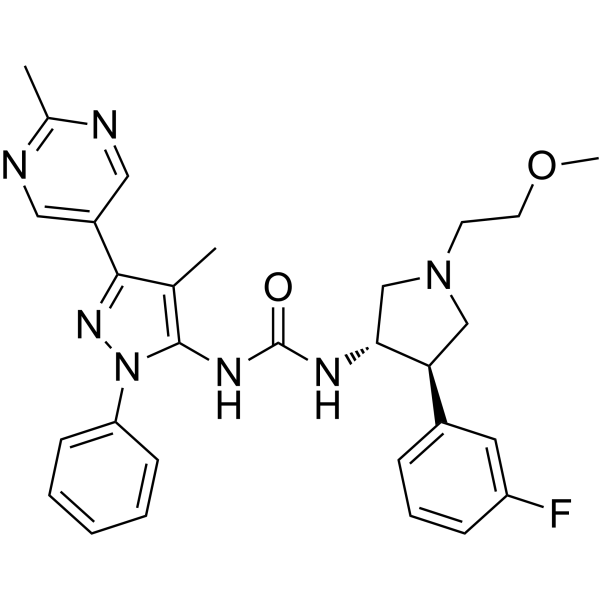
| Cat. No. |
Product Name |
Type |
-
- HY-W127737
-
|
Mecobalamin hydrate
|
Biochemical Assay Reagents
|
|
Methylcobalamin Hydrate is a coenzyme required for methionine biosynthesis. Vitamins (hematopoiesis). It acts as a histamine receptor, Alzheimer study. Methylcobalamin is also used in the research of peripheral neuropathy, diabetic neuropathy, and as an initial research for amyotrophic lateral sclerosis. It can be used to prevent or research pathologies caused by vitamin B12 deficiency, such as pernicious anemia.
|
| Cat. No. |
Product Name |
Target |
Research Area |
-
- HY-P1731B
-
|
LY3298176 hydrochloride
|
GLP Receptor
|
Neurological Disease
Metabolic Disease
Cancer
|
|
Tirzepatide hydrochloride (LY3298176 hydrochloride) is a glucose-dependent insulin nutritive polypeptide (GIP) and glucagon-like peptide-1 (GLP-1) receptor dual agonist. Tirzepatide hydrochloride has neuroprotective effects and can be used in the study of type 2 diabetes, diabetes-related neuropathy and obesity .
|
-
- HY-P1731
-
|
LY3298176
|
GLP Receptor
|
Neurological Disease
Metabolic Disease
Cancer
|
|
Tirzepatide (LY3298176) is a glucose-dependent insulin nutritive polypeptide (GIP) and glucagon-like peptide-1 (GLP-1) receptor dual agonist. Tirzepatide has neuroprotective effects and can be used in the study of type 2 diabetes, diabetes-related neuropathy and obesity .
|
-
- HY-P4066
-
|
|
Peptides
|
Cancer
|
|
Emfilermin is a recombinant human leukaemia inhibitory factor (LIF) that can be used in chemotherapy-induced peripheral neuropathy studies .
|
-
- HY-P4063
-
|
|
Peptides
|
Metabolic Disease
|
|
Pegylated synthetic human c-peptide retains bioactivity comparable to that of natural (i.e. non-polyethylene glycolated) C-peptides and has a prolonged circulating residence time in plasma for use in diabetic peripheral neuropathy studies .
|
-
- HY-P1731A
-
|
LY3298176 TFA
|
GLP Receptor
|
Neurological Disease
Metabolic Disease
Cancer
|
|
Tirzepatide TFA (LY3298176 hydrochloride) is a glucose-dependent insulin nutritive polypeptide (GIP) and glucagon-like peptide-1 (GLP-1) receptor dual agonist. Tirzepatide TFA has neuroprotective effects and can be used in the study of type 2 diabetes, diabetes-related neuropathy and obesity .
|
-
- HY-P5865
-
|
Theraphotoxin-Tap1a; TRTX-Tap1a; µ/ω-TRTX-Tap1a
|
Sodium Channel
|
Neurological Disease
|
|
Tap1a (Theraphotoxin-Tap1a) is a spider venom peptide that inhibits sodium channels with IC50s of 80 nM and 301 nM against Nav1.7 and Nav1.1, respectively. Tap1a shows analgesic effects .
|
| Cat. No. |
Product Name |
Target |
Research Area |
| Cat. No. |
Product Name |
Category |
Target |
Chemical Structure |
| Cat. No. |
Product Name |
Chemical Structure |
-
- HY-119980S
-
|
|
|
Fluphenazine-d8 is the deuterium labeled Fluphenazine. Fluphenazine is a potent, orally active phenothiazine-based dopamine receptor antagonist. Fluphenazine blocks neuronal voltage-gated sodium channels. Fluphenazine acts primarily through antagonism of postsynaptic dopamine-2 receptors in mesolimbic, nigrostriatal, and tuberoinfundibular neural pathways. Fluphenazine can antagonize Methylphenidate-induced stereotyped gnawing and inhibit climbing behaviour in mice. Fluphenazine can be used for researching psychosis and painful peripheral neuropathy associated with diabetes and has potential to inhibit SARS-CoV-2 .
|
-

Your information is safe with us. * Required Fields.
Inquiry Information
- Product Name:
- Cat. No.:
- Quantity:
- MCE Japan Authorized Agent:




















































